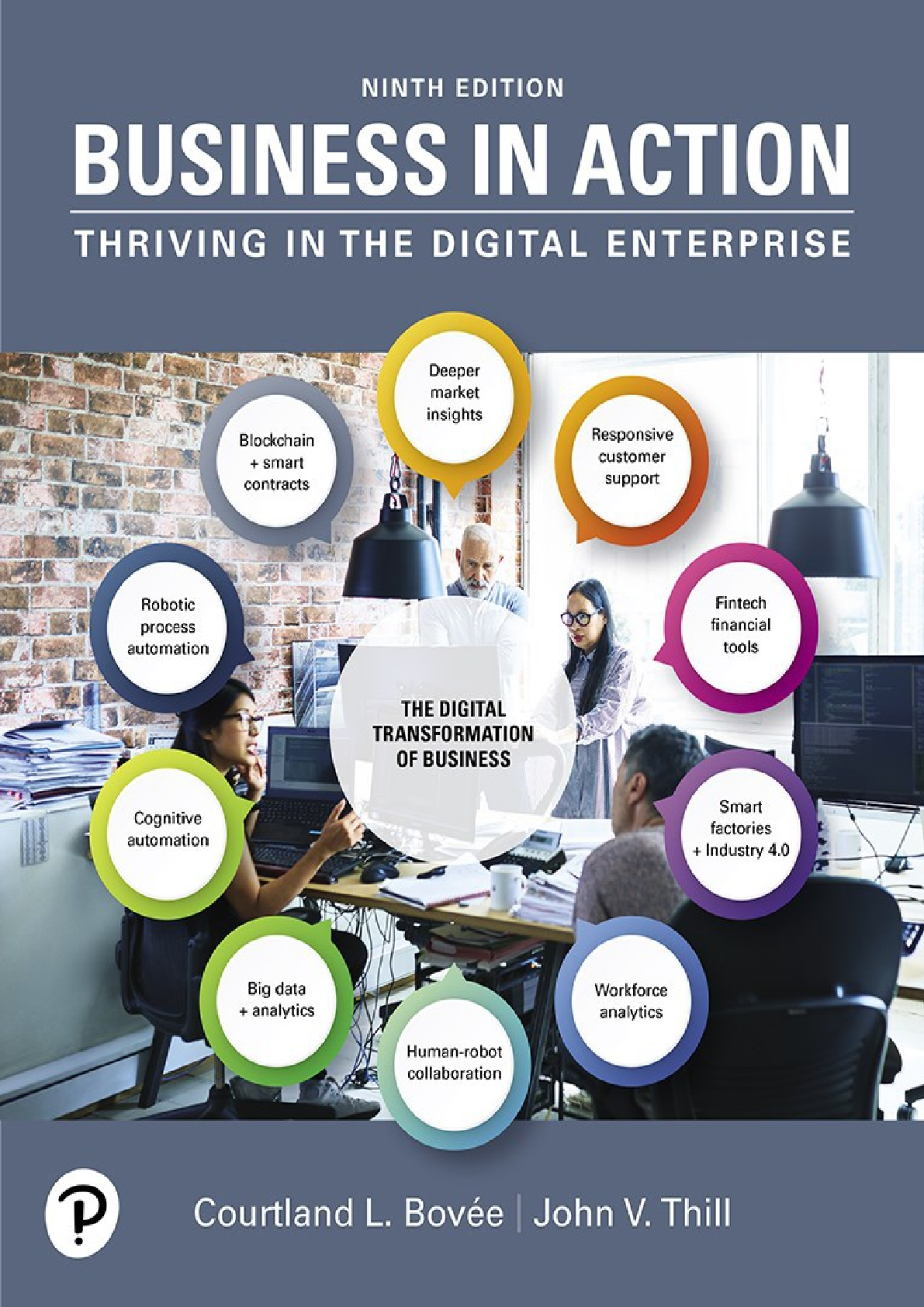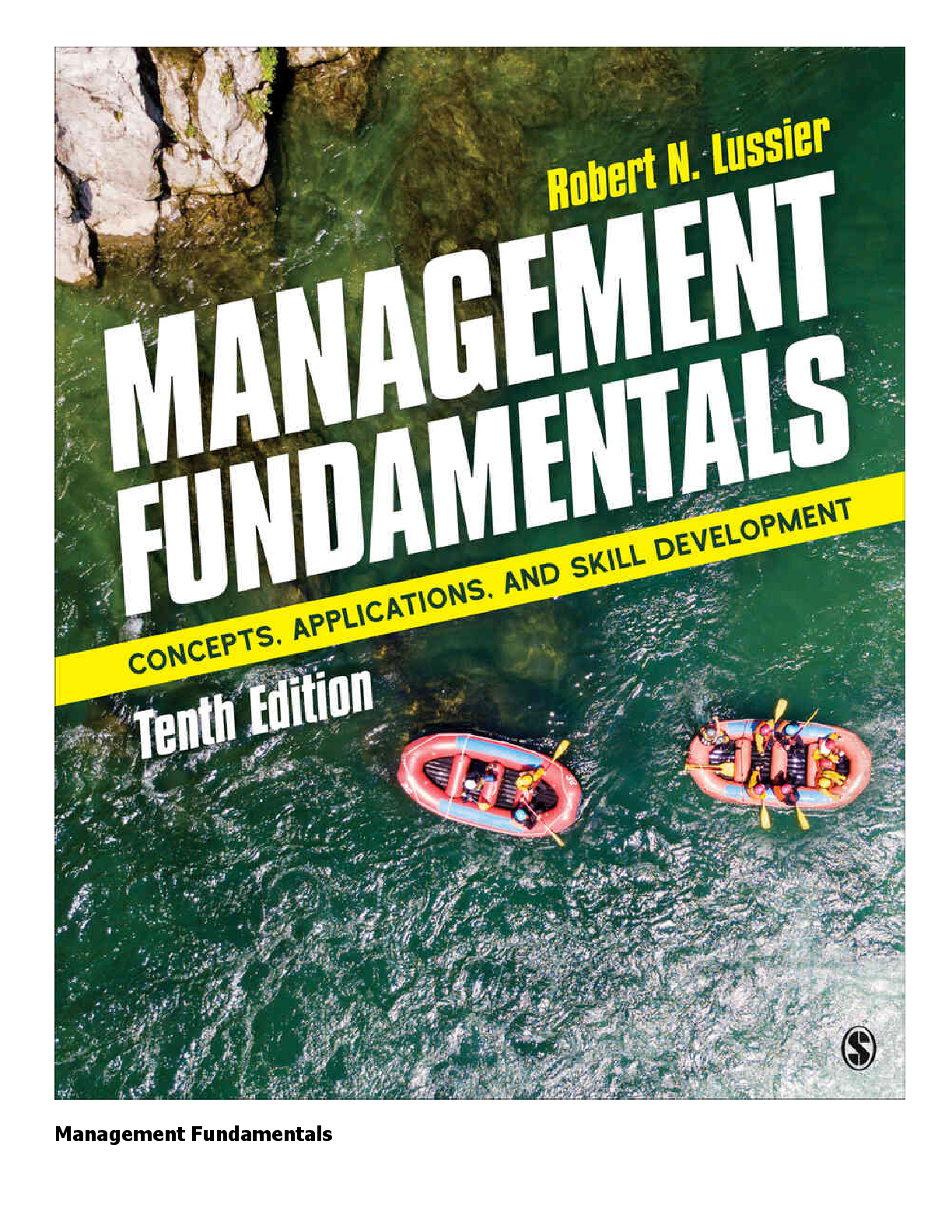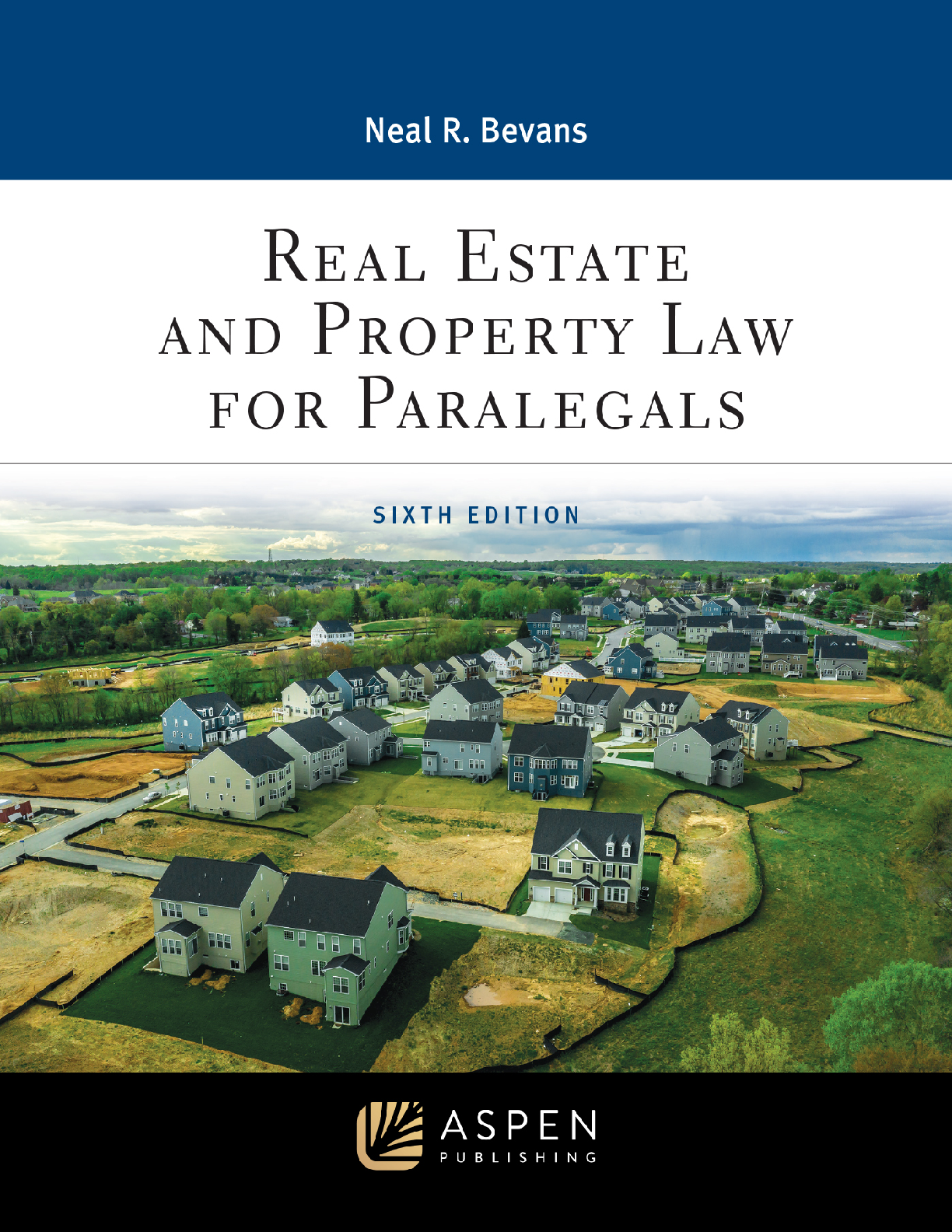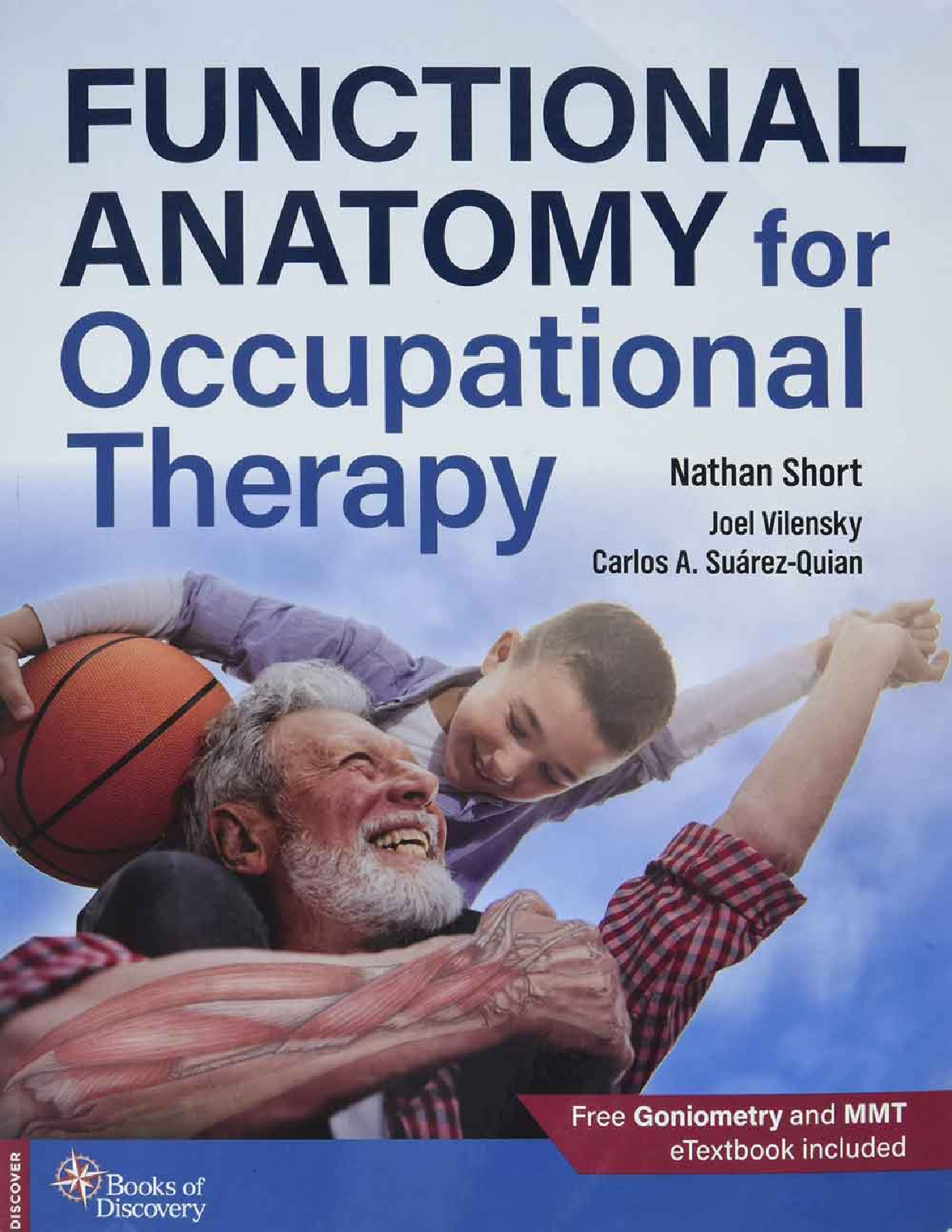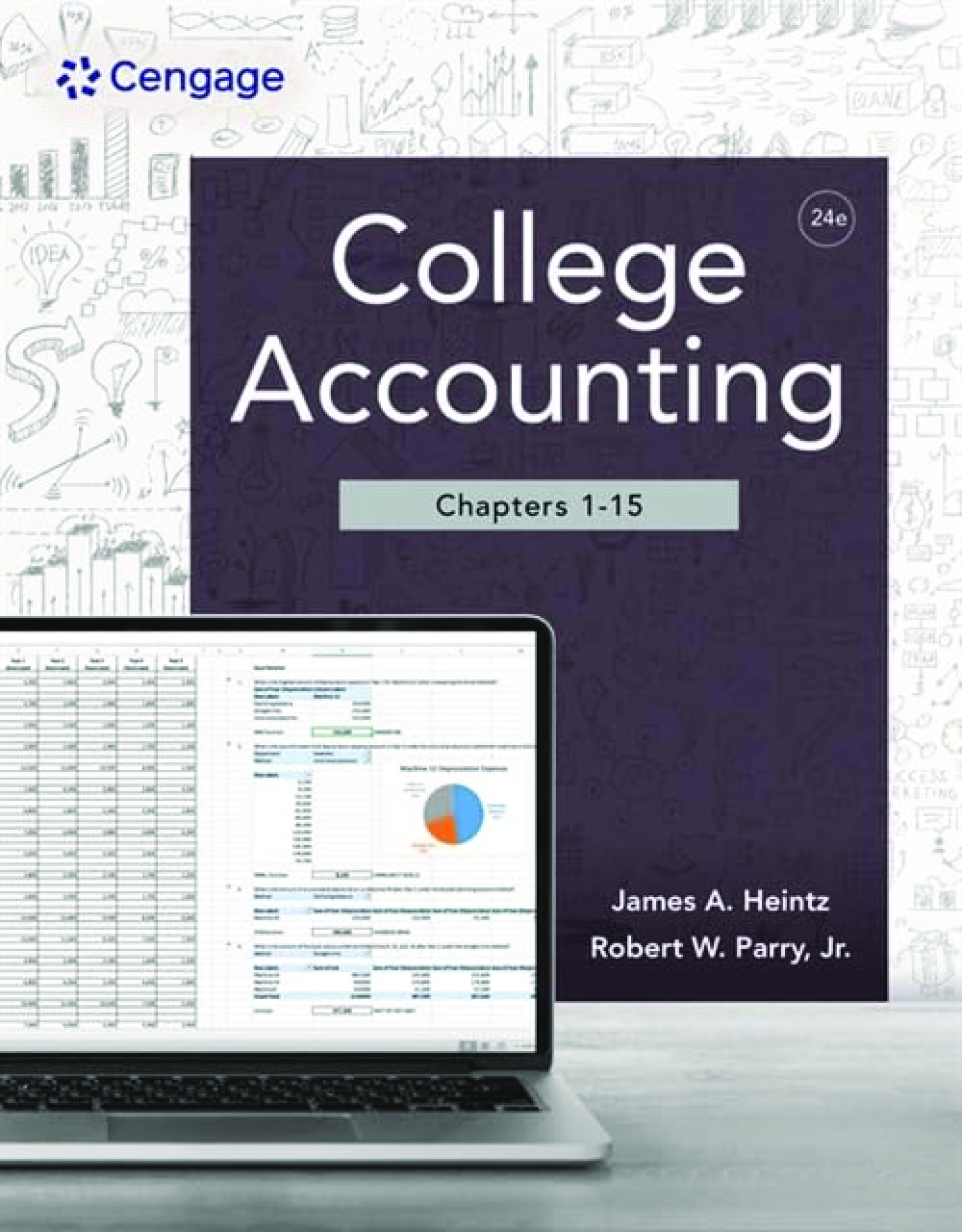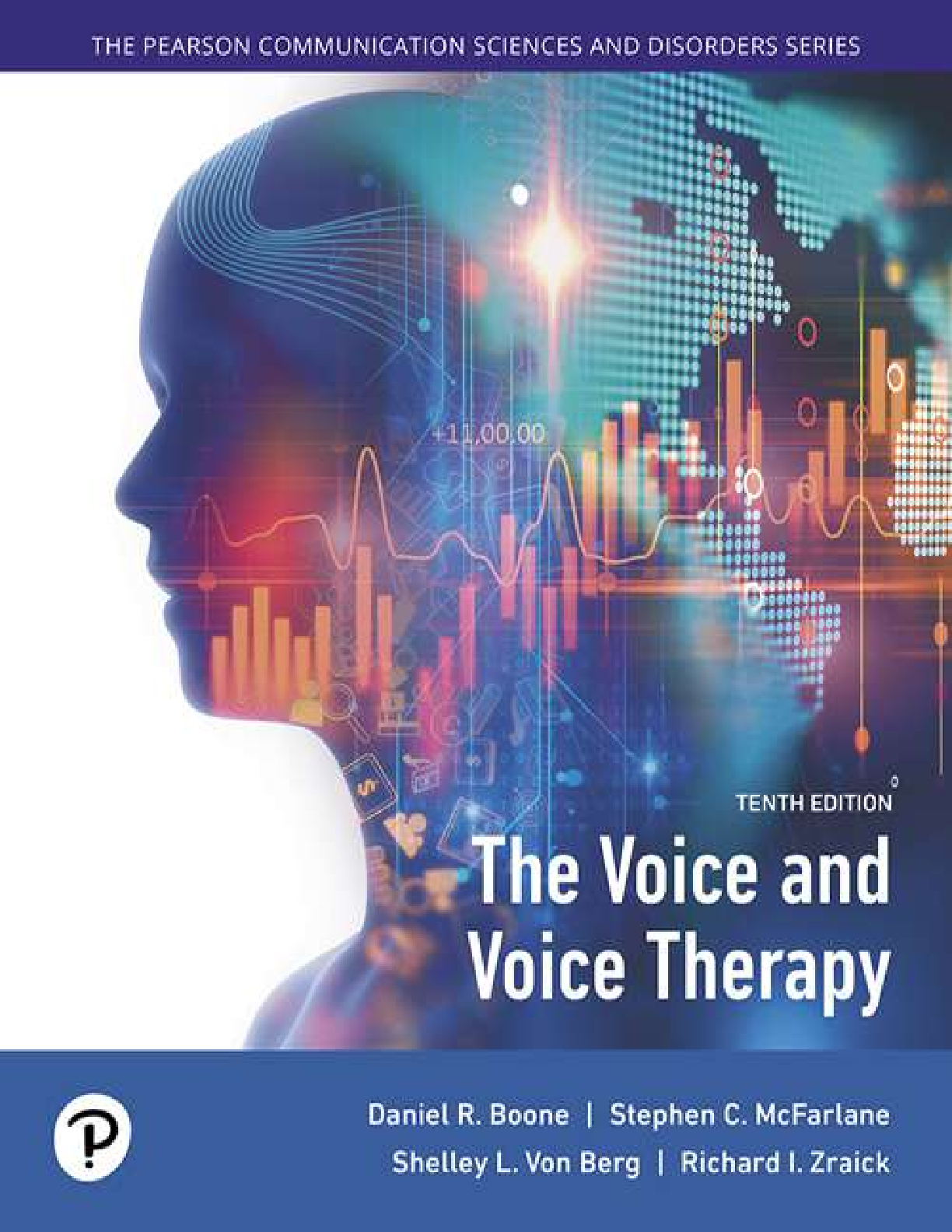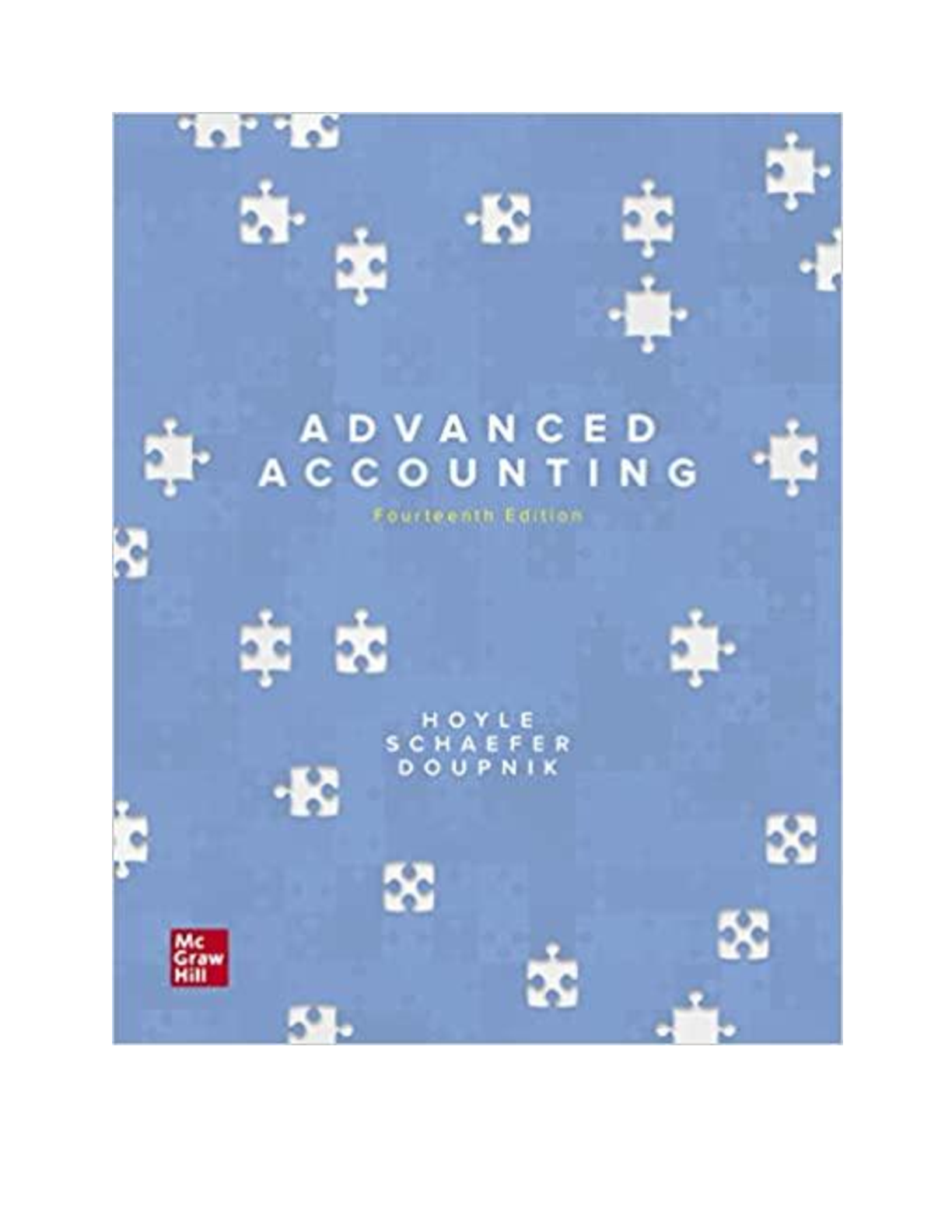Statistics > eBook-PDF > Elementary Statistics, 14th Edition By Mario Triola [PDF] [eBook] (All)
Elementary Statistics, 14th Edition By Mario Triola [PDF] [eBook]
Document Content and Description Below
Elementary Statistics Elementary Statistics About the Author Contents Preface Goals of This Fourteenth Edition Audience/Prerequisites Hallmark Features Changes to This 14th Edition Flexible S... yllabus Resources for Success Get the Most Out of MyLab Statistics® 1 Introduction to Statistics Chapter Problem Is YouTube Becoming a More Important Learning Tool? Flaw 1: Misleading Graphs Flaw 2: Bad Sampling Method Chapter Objectives 1-1 Statistical and Critical Thinking Prepare Analyze Conclude Analyzing Data: Potential Pitfalls 1-1 Basic Skills and Concepts Statistical Literacy and Critical Thinking Consider the Source Sampling Method Statistical Significance and Practical Significance What’s Wrong? Percentages 1-1 Beyond the Basics 1-2 Types of Data Parameter/Statistic Quantitative/Categorical Discrete/Continuous Levels of Measurement Big Data Missing Data 1-2 Basic Skills and Concepts Statistical Literacy and Critical Thinking 1-2 Beyond the Basics 1-3 Collecting Sample Data Design of Experiments Sampling Errors 1-3 Basic Skills and Concepts Statistical Literacy and Critical Thinking Critical Thinking: What’s Wrong? 1-3 Beyond the Basics 1-4 Ethics in Statistics Chapter Quick Quiz Review Exercises Cumulative Review Exercises Scientific Notation Technology Project Big (or Very Large) Data Project Critical Thinking: Is Being a Student More Dangerous or Unhealthy Than Being a Carpenter? Analysis Cooperative Group Activities 2 Exploring Data with Tables and Graphs Chapter Problem Stuck in Traffic? Chapter Objectives 2-1 Frequency Distributions for Organizing and Summarizing Data Procedure for Constructing a Frequency Distribution Relative Frequency Distribution Cumulative Frequency Distribution Critical Thinking: Using Frequency Distributions to Understand Data Normal Distribution Analysis of Last Digits Gaps 2-1 Basic Skills and Concepts Statistical Literacy and Critical Thinking 2-1 Beyond the Basics 2-2 Histograms Relative Frequency Histogram Critical Thinking: Interpreting Histograms Common Distribution Shapes Normal Distribution Uniform Distribution Skewness 2-2 Basic Skills and Concepts Statistical Literacy and Critical Thinking 2-2 Beyond the Basics 2-3 Graphs That Enlighten and Graphs That Deceive Graphs That Enlighten Dotplots Stemplots Time-Series Graph Bar Graphs Pareto Charts Pie Charts Frequency Polygon Graphs That Deceive Nonzero Vertical Axis Pictographs Concluding Thoughts 2-3 Basic Skills and Concepts Statistical Literacy and Critical Thinking 2-3 Beyond the Basics 2-4 Scatterplots, Correlation, and Regression 2-4 Basic Skills and Concepts Statistical Literacy and Critical Thinking 2-4 Beyond the Basics P-Values Chapter Quick Quiz Review Exercises Cumulative Review Exercises Technology Project Big (or Very Large) Data Project Were the subjects weighed or did they report their weights? Critical Thinking Cooperative Group Activities 3 Describing, Exploring, and Comparing Data Chapter Problem It’s a Small World After All! Chapter Objectives 3-1 Measures of Center 3-1 Basic Skills and Concepts Statistical Literacy and Critical Thinking 3-1 Beyond the Basics 3-2 Measures of Variation 3-2 Basic Skills and Concepts Statistical Literacy and Critical Thinking 3-2 Beyond the Basics 3-3 Measures of Relative Standing and Boxplots 3-3 Basic Skills and Concepts Statistical Literacy and Critical Thinking 3-3 Beyond the Basics Chapter Quick Quiz Review Exercises Cumulative Review Exercises Technology Project Big (or Very Large) Data Project Second-Hand Smoke Critical Thinking Cooperative Group Activities 4 Probability Chapter Problem Probability for Significance Chapter Objectives 4-1 Basic Concepts of Probability Complementary Events Identifying Significant Results with Probabilities: The Rare Event Rule for Inferential Statistics Probability Review 4-1 Basic Skills and Concepts Statistical Literacy and Critical Thinking Probability from a Sample Space Using Probability for Signifiance 4-1 Beyond the Basics Odds 4-2 Addition Rule and Multiplication Rule Addition Rule Notation for Addition Rule Disjoint Events and the Addition Rule Complementary Events and the Addition Rule Multiplication Rule Notation for Multiplication Rule Independence and the Multiplication Rule Redundancy: Important Application of Multiplication Rule Rationale for the Multiplication Rule Summary of Addition Rule and Multiplication Rule 4-2 Basic Skills and Concepts Statistical Literacy and Critical Thinking Finding Complements Redundancy Acceptance Sampling 4-2 Beyond the Basics 4-3 Complements, Conditional Probability, and Bayes’ Theorem Confusion of the Inverse 4-3 Basic Skills and Concepts Statistical Literacy and Critical Thinking At Least One Denomination Effect 4-3 Beyond the Basics 4-4 Counting 4-4 Basic Skills and Concepts Statistical Literacy and Critical Thinking 4-4 Beyond the Basics 4-5 Simulations for Hypothesis Tests 4-5 Basic Skills and Concepts Statistical Literacy and Critical Thinking 4-5 Beyond the Basics Chapter Quick Quiz Review Exercises Cumulative Review Exercises Technology Project Big (or Very Large) Data Project Critical Thinking: Interpreting results from a test for smoking Analyzing the Results Cooperative Group Activities 5 Discrete Probability Distributions Chapter Problem Is the NFL Overtime Coin-Toss Rule Fair? Chapter Objectives 5-1 Probability Distributions Parameters of a Probability Distribution Expected Value Making Sense of Results: Significant Values Identifying Significant Results with the Range Rule of Thumb Identifying Significant Results with Probabilities The Rare Event Rule for Inferential Statistics Expected Value Rationale for Formulas 5-1 Through 5-4 5-1 Basic Skills and Concepts Statistical Literacy and Critical Thinking 5-1 Beyond the Basics 5-2 Binomial Probability Distributions Methods for Finding Binomial Probabilities Rationale for the Binomial Probability Formula 5-2 Basic Skills and Concepts Statistical Literacy and Critical Thinking 5-2 Beyond the Basics 5-3 Poisson Probability Distributions Poisson Distribution as Approximation to Binomial 5-3 Basic Skills and Concepts Statistical Literacy and Critical Thinking 5-3 Beyond the Basics Chapter Quick Quiz Review Exercises Cumulative Review Exercises Technology Project Big (or Very Large) Data Project Critical Thinking: Using probability to test a claim Cooperative Group Activities 6 Normal Probability Distributions Chapter Problem So, You Want to Fly a U.S. Air Force Jet? Chapter Objectives 6-1 The Standard Normal Distribution Normal Distributions Uniform Distributions Standard Normal Distribution Finding Probabilities When Given z Scores Finding z Scores from Known Areas 6-1 Basic Skills and Concepts Statistical Literacy and Critical Thinking 6-1 Beyond the Basics 6-2 Real Applications of Normal Distributions Finding Values from Known Areas Significance 6-2 Basic Skills and Concepts Statistical Literacy and Critical Thinking 6-2 Beyond the Basics 6-3 Sampling Distributions and Estimators Sampling Distribution of Sample Proportion Sampling Distribution of the Sample Mean Sampling Distribution of the Sample Variance Estimators: Unbiased and Biased 6-3 Basic Skills and Concepts Statistical Literacy and Critical Thinking 6-3 Beyond the Basics 6-4 The Central Limit Theorem Applying the Central Limit Theorem Introduction to Hypothesis Testing Identifying Significant Results with Probabilities: The Rare Event Rule for Inferential Statistics Not Exactly, but “At Least as Extreme” Correction for a Finite Population 6-4 Basic Skills and Concepts Statistical Literacy and Critical Thinking 6-4 Beyond the Basics 6-5 Assessing Normality 6-5 Basic Skills and Concepts Statistical Literacy and Critical Thinking 6-5 Beyond the Basics 6-6 Normal as Approximation to Binomial (available at www.TriolaStats.com) Chapter Quick Quiz Review Exercises Cumulative Review Exercises Technology Project Big (or Very Large) Data Project Critical Thinking: Designing a campus dormitory elevator Cooperative Group Activities 7 Estimating Parameters and Determining Sample Sizes Chapter Problem Surveys: The Window to Evolving Technologies Chapter Objectives 7-1 Estimating a Population Proportion Point Estimate Confidence Interval Interpreting a Confidence Interval Bootstrap Resampling for Constructing Confidence Intervals Analyzing Polls Finding the Point Estimate and E from a Confidence Interval Using Confidence Intervals for Hypothesis Tests Determining Sample Size Better-Performing Confidence Intervals Which Method Is Best? 7-1 Basic Skills and Concepts Statistical Literacy and Critical Thinking 7-1 Beyond the Basics 7-2 Estimating a Population Mean Estimating a Population Mean Student t Distribution Procedure for Constructing a Confidence Interval for μ Bootstrap Resampling for Constructing Confidence Intervals Finding a Point Estimate and Margin of Error E from a Confidence Interval Using Confidence Intervals to Describe, Explore, or Compare Data Estimating a Population Mean When σ Is Known Choosing the Correct Distribution Determining Sample Size 7-2 Basic Skills and Concepts Statistical Literacy and Critical Thinking 7-2 Beyond the Basics 7-3 Estimating a Population Standard Deviation or Variance Determining Sample Size 7-3 Basic Skills and Concepts Statistical Literacy and Critical Thinking 7-3 Beyond the Basics 7-4 Bootstrapping: Using Technology for Estimates 7-4 Basic Skills and Concepts Statistical Literacy and Critical Thinking 7-4 Beyond the Basics Chapter Quick Quiz Review Exercises Cumulative Review Exercises Technology Project Chicago Commute Time Big (or Very Large) Data Project Critical Thinking: What does the survey tell us? Analyzing the Data Cooperative Group Activities 8 Hypothesis Testing Chapter Problem Cybersecurity: Do Most Internet Users Utilize Two-Factor Authentication to Protect Their Online Data? Chapter Objectives 8-1 Basics of Hypothesis Testing Steps 1, 2, 3: Use the Original Claim to Create a Null Hypothesis H0 and an Alternative Hypothesis H1 Step 4: Select the Significance Level α Step 5: Identify the Statistic Relevant to the Test and Determine Its Sampling Distribution (such as normal, t, or χ2) Step 6: Find the Value of the Test Statistic, Then Find Either the P-Value or the Critical Value(s) Two-Tailed, Left-Tailed, Right-Tailed P-Value Method P-Value and Hypothesis Testing Controversy Critical Value Method Step 7: Make a Decision to Either Reject H0 or Fail to Reject H0 Step 8: Restate the Decision Using Simple and Nontechnical Terms Confidence Intervals for Hypothesis Tests Equivalent Methods Resampling Methods (See Section 8-5) Part 2 Type I and Type II Errors Part 3 Power of a Hypothesis Test Power and the Design of Experiments 8-1 Basic Skills and Concepts Statistical Literacy and Critical Thinking 8-1 Beyond the Basics 8-2 Testing a Claim About a Proportion Claim: Most Internet Users Utilize Two-Factor Authentication to Protect Their Online Data Solution: P-Value Method Solution: Critical Value Method Solution: Confidence Interval Method Alternative Methods: Resampling Methods of Bootstrapping and Randomization 8-2 Basic Skills and Concepts Statistical Literacy and Critical Thinking 8-2 Beyond the Basics 8-3 Testing a Claim About a Mean Testing a Claim About μ with σ Not Known Equivalent Methods Requirement of “Normality or n>30” Important Properties of the Student t Distribution P-Value Method with Technology P-Value Method Without Technology Critical Value Method Confidence Interval Method Alternative Methods Used When Population Is Not Normal and n≤30 Two-Tailed Test Testing a Claim About μ When σ Is Known 8-3 Basic Skills and Concepts Statistical Literacy and Critical Thinking 8-3 Beyond the Basics 8-4 Testing a Claim About a Standard Deviation or Variance 8-4 Basic Skills and Concepts Statistical Literacy and Critical Thinking 8-4 Beyond the Basics 8-5 Resampling: Using Technology for Hypothesis Testing 8-5 Basic Skills and Concepts Statistical Literacy and Critical Thinking 8-5 Beyond the Basics Chapter Quick Quiz Review Exercises Cumulative Review Exercises Technology Project Big (or Very Large) Data Project Critical Thinking: Did the Official Cheat? Analyzing the Results Cooperative Group Activities 9 Inferences from Two Samples Chapter Problem To Stop Smoking, Which is Better: E-Cigarettes or Nicotine Replacement? Chapter Objectives 9-1 Two Proportions Hypothesis Tests P-Value Method Critical Value Method Confidence Intervals Alternative Methods: Resampling Methods of Bootstrapping and Randomization Rationale: Why Do the Procedures of This Section Work? 9-1 Basic Skills and Concepts Statistical Literacy and Critical Thinking 9-1 Beyond the Basics 9-2 Two Means: Independent Samples P-Value Method Critical Value Method Confidence Intervals Alternative Methods: Resampling Methods of Bootstrapping and Randomization Alternative Method: Assume That σ1=σ2 and Pool the Sample Variances Alternative Method Used When σ1 and σ2 Are Known Recommended Strategy for Two Independent Means 9-2 Basic Skills and Concepts Statistical Literacy and Critical Thinking Larger Data Sets 9-2 Beyond the Basics 9-3 Matched Pairs Good Experimental Design Procedures for Inferences with Matched Pairs Equivalent Methods Alternative Methods: Resampling Methods of Bootstrapping and Randomization 9-3 Basic Skills and Concepts Statistical Literacy and Critical Thinking Larger Data Sets 9-3 Beyond the Basics 9-4 Two Variances or Standard Deviations F Distribution Interpreting the Value of the F Test Statistic Count Five Levene-Brown-Forsythe Test 9-4 Basic Skills and Concepts Statistical Literacy and Critical Thinking 9-4 Beyond the Basics 9-5 Resampling: Using Technology for Inferences 9-5 Basic Skills and Concepts Statistical Literacy and Critical Thinking Two Proportions Two Means Matched Pairs 9-5 Beyond the Basics Chapter Quick Quiz Review Exercises Cumulative Review Exercises Technology Project Big (or Very Large) Data Project What Is the Effect of the NFL Overtime Rule Change? Analysis Cooperative Group Activities 10 Correlation and Regression Chapter Problem Are Powerball Ticket Lines Longer When the Jackpot is Higher? Chapter Objectives 10-1 Correlation Explore! Interpreting Scatterplots Measure the Strength of the Linear Correlation with r Properties of the Linear Correlation Coefficient r Calculating the Linear Correlation Coefficient r Is There a Linear Correlation? Interpreting r: Explained Variation Interpreting r with Causation: Don’t Go There! Common Errors Involving Correlation One-Tailed Tests Rationale for Methods of This Section Formula 10-1 Formula 10-2 Part 3 Randomization Test 10-1 Basic Skills and Concepts Statistical Literacy and Critical Thinking 10-1 Beyond the Basics Randomization 10-2 Regression Making Predictions Interpreting the Regression Equation: Marginal Change Outliers and Influential Points Residuals and the Least-Squares Property Residual Plots 10-2 Basic Skills and Concepts Statistical Literacy and Critical Thinking 10-2 Beyond the Basics 10-3 Prediction Intervals and Variation Explained and Unexplained Variation Coefficient of Determination 10-3 Basic Skills and Concepts Statistical Literacy and Critical Thinking 10-3 Beyond the Basics 10-4 Multiple Regression R2 and Adjusted R2 P-Value Finding the Best Multiple Regression Equation Guidelines for Finding the Best Multiple Regression Equation Tests of Regression Coefficients Predictions With Multiple Regression Dummy Variable as a Predictor Variable Logistic Regression 10-4 Basic Skills and Concepts Statistical Literacy and Critical Thinking 10-4 Beyond the Basics 10-5 Nonlinear Regression 10-5 Basic Skills and Concepts Statistical Literacy and Critical Thinking 10-5 Beyond the Basics Chapter Quick Quiz Review Exercises Cumulative Review Exercises Technology Project Big (or Very Large) Data Project Critical Thinking: Do we report body measurements that are different from the actual measurements? Cooperative Group Activities 11 Goodness-of-Fit and Contingency Tables Chapter Problem Is There a Link Between the Measles Vaccine and Autism? Chapter Objectives 11-1 Goodness-of-Fit 11-1 Basic Skills and Concepts Statistical Literacy and Critical Thinking 11-1 Beyond the Basics 11-2 Contingency Tables Test of Homogeneity Fisher’s Exact Test McNemar’s Test for Matched Pairs 11-2 Basic Skills and Concepts Statistical Literacy and Critical Thinking 11-2 Beyond the Basics Chapter Quick Quiz Review Exercises Cumulative Review Exercises Technology Project Big (or Very Large) Data Project Critical Thinking: Was Allstate wrong? Analyzing the Results Cooperative Group Activities 12 Analysis of Variance Chapter Problem Are Larger Cars Safer in Crashes? Chapter Objectives 12-1 One-Way ANOVA F Distribution Calculating the Test Statistic F with Equal Sample Sizes n Finding the Critical Value Understanding the Effect of a Mean on the F Test Statistic Calculations with Unequal Sample Sizes Designing Experiments Identifying Which Means Are Significantly Different Bonferroni Multiple Comparison Test 12-1 Basic Skills and Concepts Statistical Literacy and Critical Thinking 12-1 Beyond the Basics 12-2 Two-Way ANOVA Explore Data with Means and an Interaction Graph 12-2 Basic Skills and Concepts Statistical Literacy and Critical Thinking 12-2 Beyond the Basics Chapter Quick Quiz Review Exercises Cumulative Review Exercises Technology Project Big (or Very Large) Data Project Critical Thinking: Does Exposure to Lead Affect IQ Scores of Children? Cooperative Group Activities 13 Nonparametric Tests Chapter Problem Do Better Smartphones Cost More? Chapter Objectives 13-1 Basics of Nonparametric Tests 13-2 Sign Test Claims About Matched Pairs Claims Involving Nominal Data with Two Categories Claims About the Median of a Single Population 13-2 Basic Skills and Concepts Statistical Literacy and Critical Thinking Matched Pairs Nominal Data Appendix B Data Sets 13-2 Beyond the Basics 13-3 Wilcoxon Signed-Ranks Test for Matched Pairs Claims Involving Matched Pairs Claims About the Median of a Single Population 13-3 Basic Skills and Concepts Statistical Literacy and Critical Thinking Using the Wilcoxon Signed-Ranks Test 13-3 Beyond the Basics 13-4 Wilcoxon Rank-Sum Test for Two Independent Samples 13-4 Basic Skills and Concepts Statistical Literacy and Critical Thinking Wilcoxon Rank-Sum Test Appendix B Data Sets 13-4 Beyond the Basics 13-5 Kruskal-Wallis Test for Three or More Samples 13-5 Basic Skills and Concepts Statistical Literacy and Critical Thinking Using the Kruskal-Wallis Test Appendix B Data Sets 13-5 Beyond the Basics 13-6 Rank Correlation 13-6 Basic Skills and Concepts Statistical Literacy and Critical Thinking Testing for Rank Correlation Appendix B Data Sets 13-6 Beyond the Basics 13-7 Runs Test for Randomness Fundamental Principle of the Runs Test Testing for Randomness Above and Below the Mean or Median 13-7 Basic Skills and Concepts Statistical Literacy and Critical Thinking Using the Runs Test for Randomness Runs Test with Large Samples 13-7 Beyond the Basics Chapter Quick Quiz Review Exercises Using Nonparametric Tests Cumulative Review Exercises Hershey’s Kisses Technology Project Big (or Very Large) Data Project Critical Thinking: Was the draft lottery random? Analyzing the Results Cooperative Group Activities 14 Statistical Process Control Chapter Problem Global Warming: Is It Real? Chapter Objectives 14-1 Control Charts for Variation and Mean Process Data Run Chart Interpreting Run Charts Out of Control Criteria Causes of Variation Control Charts Interpreting Control Charts Out-of-Control-Criteria Control Chart for Monitoring Variation: The R Chart Control Chart for Monitoring Means: The x¯ Chart 14-1 Basic Skills and Concepts Statistical Literacy and Critical Thinking 14-1 Beyond the Basics 14-2 Control Charts for Attributes 14-2 Basic Skills and Concepts Statistical Literacy and Critical Thinking 14-2 Beyond the Basics Chapter Quick Quiz Review Exercises Cumulative Review Exercises Technology Project Big (or Very Large) Data Project Critical Thinking: Are the axial loads within statistical control? Is the process of manufacturing cans proceeding as it should? Analyzing the Results Cooperative Group Activities 15 Holistic Statistics Chapter Problem Is the Body Temperature of 98.6°F a Myth? Chapter Objectives Is the Body Temperature of 98.6°F a Myth? Prepare Context Source Sampling Method Analyze Graph the Data Explore the Data Apply Statistical Methods Conclusion Statistical and Practical Significance There’s More to the Story Key Takeaways Holistic Exercises Appendix A Tables and Formulas Negative z Scores Positive z Scores Formulas by Mario F. Triola Copyright 2022 Pearson Education, Inc. Ch. 3: Descriptive Statistics Ch. 4: Probability Ch. 5: Probability Distributions Ch. 6: Normal Distribution Ch. 7: Confidence Intervals (one population) Ch. 7: Sample Size Determination Ch. 8: Test Statistics (one population) Ch. 9: Confidence Intervals (two populations) Ch. 9: Test Statistics (two populations) Ch. 10: Linear Correlation/Regression Ch. 11: Goodness-of-Fit and Contingency Tables Ch. 12: One-Way Analysis of Variance Ch. 12: Two-Way Analysis of Variance Ch. 13: Nonparametric Tests Ch. 14: Control Charts Procedure for Hypothesis Tests Hypothesis Tests: Wording of Final Conclusion Finding P-Values Appendix B Data Sets Data Set 1: Body Data Data Set 2: ANSUR I 1988 Data Set 3: ANSUR II 2012 Data Set 4: Measured and Reported Data Set 5: Body Temperatures Data Set 6: Births Data Set 7: Audiometry Data Set 8: Vision Data Set 9: Foot and Height Data Set 10: Family Heights Data Set 11: IQ and Lead Data Set 12: IQ and Brain Size Data Set 13: Freshman 15 Data Set 14: Word Counts Data Set 15: Passive and Active Smoke Data Set 16: Cigarette Contents Data Set 17: Arsenic in Rice Data Set 18: Bear Measurements Data Set 19: Manatee Boat Deaths Data Set 20: Alcohol and Tobacco in Movies Data Set 21: Oscar Winner Age Data Set 22: Presidents Data Set 23: Nobel Laureates and Chocolate Data Set 24: Earthquakes Data Set 25: Tornadoes Data Set 26: Old Faithful Data Set 27: Internet Traffic Data Set 28: Course Evaluations Data Set 29: Speed Dating Data Set 30: Queues Data Set 31: Commute Times Data Set 32: Taxis Data Set 33: Disney World Wait Times Data Set 34: Airport Data Speeds Data Set 35: Car Data Data Set 36: Fast Food Data Set 37: Cola Weights and Volumes Data Set 38: Candies Data Set 39: Chocolate Chip Cookies Data Set 40: Coin Weights Data Set 41: Aluminum Cans Data Set 42: Garbage Weight Data Set 43: Draft Lottery Data Set 44: Weights of Minted Quarters Data Set 45: Births in New York Data Set 46: Dow Jones Industrial Average (DJIA) Appendix C Websites and Bibliography of Books Websites Books Appendix D Credits [Show More]
Last updated: 2 years ago
Preview 1 out of 600 pages

Buy this document to get the full access instantly
Instant Download Access after purchase
Buy NowInstant download
We Accept:

Reviews( 0 )
$25.00
Can't find what you want? Try our AI powered Search
Document information
Connected school, study & course
About the document
Uploaded On
Dec 22, 2022
Number of pages
600
Written in
Additional information
This document has been written for:
Uploaded
Dec 22, 2022
Downloads
0
Views
95


